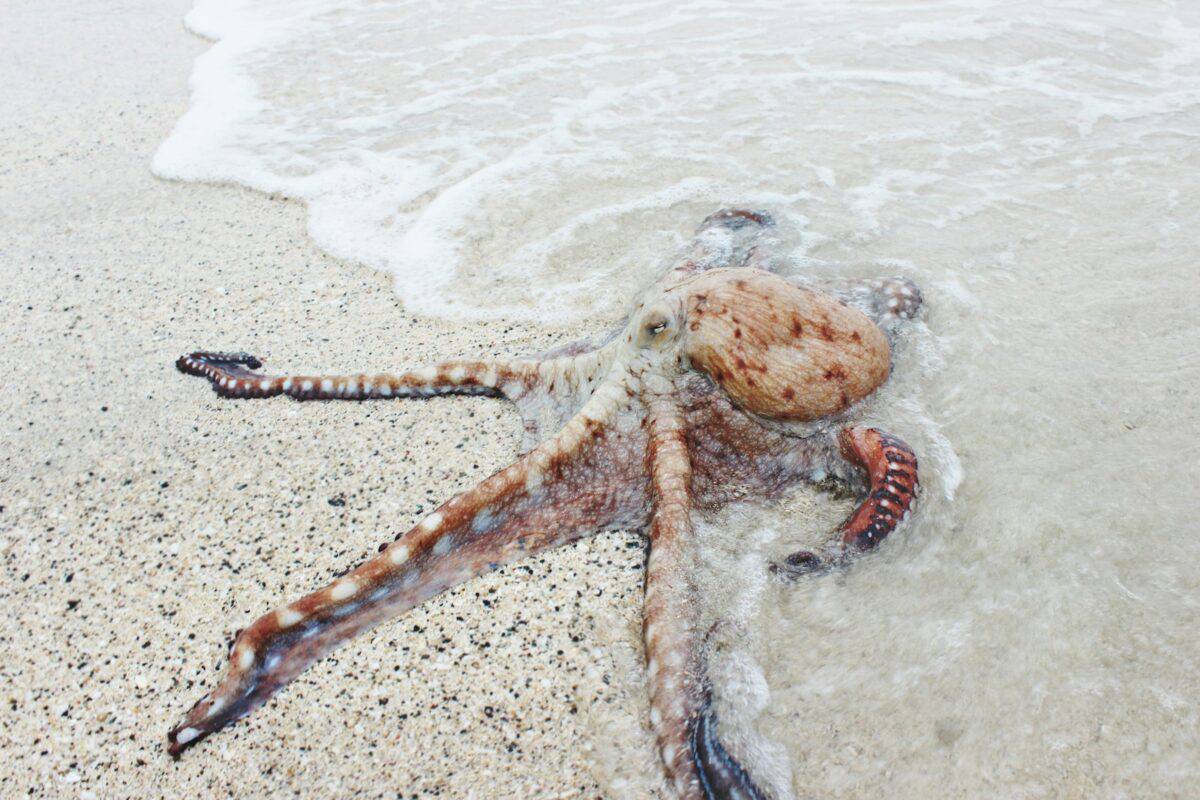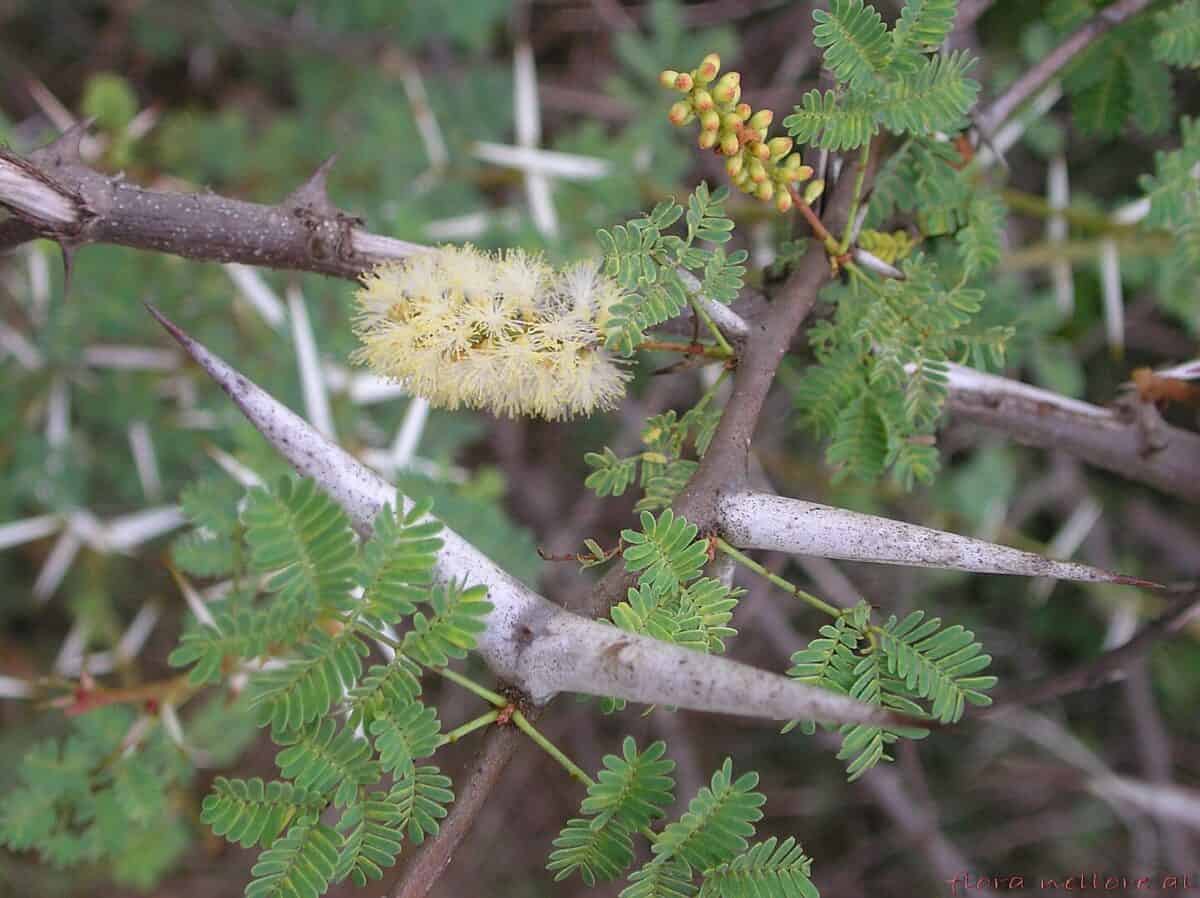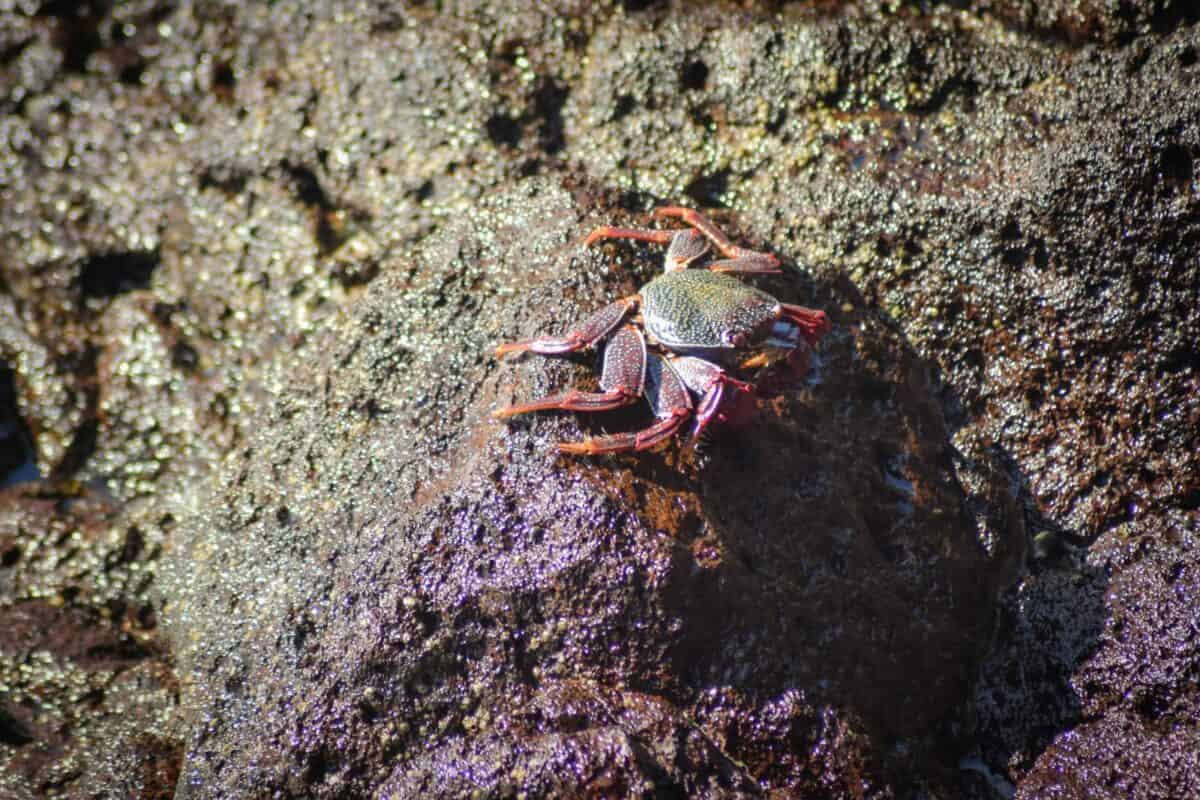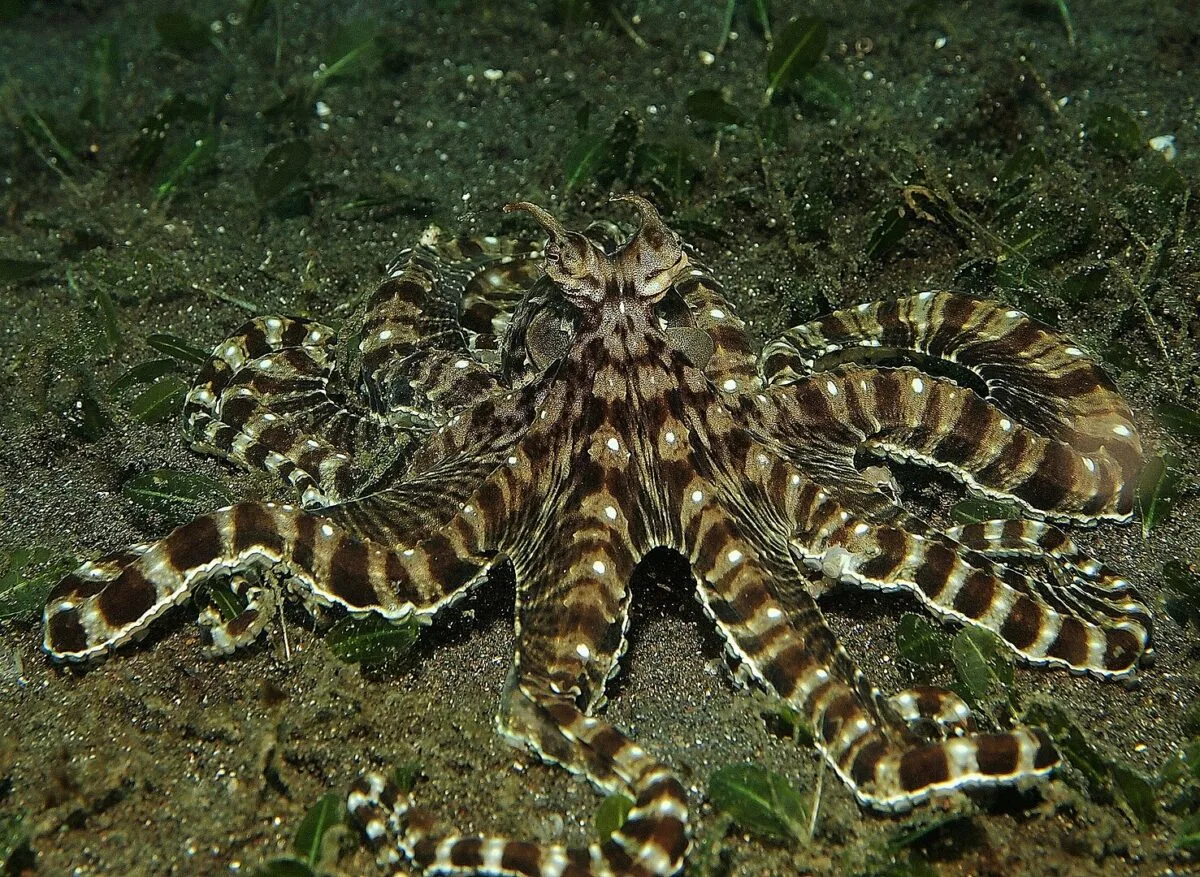In the wild, survival isn’t always about being the strongest or fastest. Often, it’s about being the smartest. Throughout millions of years of evolution, countless species have developed fascinating and ingenious ways to outwit those that would make them a meal. From employing chemical warfare to playing dead, the natural world offers a masterclass in creative problem-solving when life is on the line. This article explores 15 remarkable animals that have evolved astonishing strategies to outsmart their predators, showcasing nature’s endless capacity for innovation when survival is at stake.
13. The Deceptive Defense of Opossums

North America’s only marsupial, the opossum, has mastered one of nature’s oldest tricks: playing dead. When threatened, these remarkable creatures enter an involuntary, comatose-like state that can last for hours. This behavior, known as “thanatosis,” involves more than simply lying still. The opossum’s body becomes limp, its breathing slows dramatically, and it secretes a foul-smelling substance from its anal glands that mimics the smell of decomposition. Their lips pull back in a grimace, revealing their teeth, while they drool and even emit a green substance from their anal glands. This elaborate performance is so convincing that predators, who typically prefer fresh kills, lose interest and move on. What makes this defense particularly impressive is that it’s not a conscious choice but rather an involuntary physiological response to extreme fear, demonstrating how deeply ingrained survival mechanisms can become through evolutionary processes.
12. Octopuses Masters of Disguise and Escape

Octopuses are among the most intelligent invertebrates, with problem-solving abilities that rival many vertebrates. Their defensive repertoire is extraordinarily sophisticated, beginning with their remarkable capacity for camouflage. Using specialized cells called chromatophores, they can change not only their color but also their texture and pattern to perfectly match their surroundings in mere milliseconds. If discovered, octopuses can release a cloud of ink to confuse predators while they make their escape. Their flexibility is another key survival tool—lacking a rigid skeleton, they can squeeze through openings as small as a coin. Some species, like the mimic octopus, go even further by impersonating other dangerous sea creatures such as lionfish, sea snakes, and flatfish. Perhaps most impressively, octopuses have been observed using tools for protection, such as carrying coconut shells or stacking rocks to create protective shelters, demonstrating a level of planning and foresight previously thought impossible in invertebrates.
11. Bombardier Beetles’ Chemical Warfare

The bombardier beetle possesses one of the most explosive defense mechanisms in the animal kingdom—quite literally. When threatened, this unassuming insect becomes a living chemical weapon. Inside its abdomen, the beetle houses two separate chambers containing different chemical compounds: hydrogen peroxide and hydroquinones in one, and enzymes called peroxidases and catalases in the other. When danger approaches, the beetle mixes these chemicals, triggering an exothermic reaction that heats the mixture to nearly 100°C (212°F). This boiling, irritating chemical cocktail is then expelled with an audible pop from a specialized rotatable turret at the tip of its abdomen, often directly into the face of the attacker. The spray can reach distances of up to 20 centimeters and is accurate enough to target specific predators. The bombardier beetle can fire multiple rounds in rapid succession, giving it time to escape while its attacker deals with the painful, scorching spray. This sophisticated chemical defense system demonstrates the remarkable complexity that can evolve in seemingly simple organisms.
10. Thorny Devil’s Water-Harvesting Trickery

The thorny devil (Moloch horridus), a small lizard native to Australia’s arid regions, employs a multifaceted approach to survival. While its fearsome appearance—covered in sharp, conical spines—serves as its first line of defense, its true genius lies in how it manages to survive in one of Earth’s harshest environments. The lizard’s skin is covered in microscopic channels that form a network of hygroscopic grooves. These tiny channels work through capillary action, allowing the thorny devil to collect and transport water from any part of its body to its mouth—even from condensation, morning dew, or sand that contains moisture. This remarkable adaptation means the thorny devil rarely needs to search for standing water, keeping it safely hidden from predators while other animals must risk exposure at waterholes. Additionally, when threatened, the thorny devil has a distinctive walk, rocking back and forth in a way that makes it difficult for predators to judge its speed and direction. Combined with its camouflage coloration that helps it blend into the reddish-sandy environment, the thorny devil’s multilayered survival strategy keeps it safe from birds of prey, goannas, and other desert predators.
9. The Hagfish’s Slime Defense

The hagfish, often considered one of the most disgusting creatures in the ocean, has survived relatively unchanged for over 300 million years thanks to one repulsive but effective defense mechanism. When attacked, the hagfish instantaneously releases a special slime from up to 200 slime glands distributed along its body. This is no ordinary slime—a single hagfish can produce enough slime to turn a five-gallon bucket of water into gel in seconds. The slime consists of mucin proteins and thread-like fibers that, when combined with seawater, expand up to 10,000 times their original volume. This substance is particularly effective against gill-breathing predators like sharks and bony fish, clogging their gills and potentially suffocating them if they don’t immediately retreat. The slime is also incredibly difficult to remove, forcing predators to spend valuable time cleaning themselves rather than continuing their attack. The hagfish itself escapes its own slime by tying itself into a knot and sliding the knot from head to tail, effectively wiping off the slime as it goes. This slime defense is so effective that hagfish have few natural predators, despite being blind, jawless, and relatively slow-moving.
8. Mimic Octopus The Ultimate Impersonator

The mimic octopus (Thaumoctopus mimicus), discovered in 1998 in the waters of Southeast Asia, elevates deception to an art form. Unlike other octopuses that simply blend into their surroundings, the mimic octopus actively impersonates other marine species—often venomous or dangerous ones—to deter potential predators. With its brown and white striped coloration and remarkable control over its body shape, this intelligent cephalopod has been observed mimicking at least 15 different species, including sea snakes, lionfish, flatfish, jellyfish, sea anemones, and mantis shrimp. What makes the mimic octopus truly exceptional is its apparent ability to select which dangerous animal to impersonate based on the specific threat it faces. When confronted by damselfish, it might impersonate a banded sea snake, their natural predator. When moving across open sand, it can pull its arms into a leaf-shape and move like a flatfish. Some researchers believe the mimic octopus may even be able to mimic the coloration and behaviors of specific predators that threaten its attackers, essentially “calling in backup” by impersonating a predator’s predator. This strategic impersonation, requiring both intelligence and physical versatility, represents one of the most sophisticated defense mechanisms in the animal kingdom.
7. The Texas Horned Lizard’s Blood-Squirting Defense

The Texas horned lizard (Phrynosoma cornutum) employs one of the most startling and unusual defense mechanisms in the reptile world. When threatened by predators like coyotes, dogs, or cats, this small lizard can increase the blood pressure in vessels around its eyes until they rupture, shooting a stream of blood up to 5 feet (1.5 meters) away. This isn’t just a shocking visual deterrent—the blood contains chemical compounds that are particularly foul-tasting and nauseating to canids. A dog or coyote that gets sprayed in the mouth will often retreat, shaking its head and pawing at its muzzle in disgust. Remarkably, the lizard can spray blood multiple times if necessary, losing up to 25% of its blood volume without serious harm. While this defense works well against mammalian predators, the Texas horned lizard employs different strategies against birds of prey and snakes, including camouflage, inflating its body to appear larger, and using its crown of horns as physical protection. The blood-squirting ability, technically known as autohaemorrhaging, is a testament to how extreme evolutionary pressure can produce seemingly outlandish but effective survival adaptations.
6. Sea Cucumbers Expelling Organs as Distraction

Sea cucumbers have developed perhaps one of the most drastic self-defense mechanisms in the animal kingdom: expelling their internal organs to distract predators. When threatened, certain species of sea cucumbers can rapidly contract their muscles and literally eject parts of their digestive tract, respiratory trees, and other internal organs through their anus or a rupture in their body wall. These expelled organs are sticky, entangling, and sometimes contain a toxic chemical called holothurin, making them particularly effective at occupying a predator’s attention. While the predator is distracted by or entangled in these expelled organs, the sea cucumber can make its slow escape. What makes this strategy even more remarkable is that sea cucumbers possess extraordinary regenerative abilities—within a few weeks, they can regrow the entire suite of expelled organs. Some species have even more specialized defenses: the sticky Cuvierian tubules of certain sea cucumbers become longer and more adhesive when ejected into seawater, effectively entangling predators. This extreme form of self-sacrifice—temporarily surrendering parts of their own body—demonstrates the lengths to which evolution will go to ensure survival in highly competitive marine environments.
5. Stick Insects Masters of Camouflage

Stick insects (Phasmatodea) have evolved one of the most effective forms of crypsis, or camouflage, in the animal kingdom. Their extraordinary resemblance to twigs, leaves, and branches allows them to hide in plain sight from predators like birds, reptiles, and small mammals. This mimicry extends beyond mere appearance—stick insects also behaviorally enhance their disguise by swaying gently when breezes blow, mimicking the natural movement of vegetation. Some species have body textures that resemble bark or lichen, complete with mock damage and discoloration patterns that mimic real plant matter. What makes stick insects particularly fascinating is that their camouflage is often species-specific, with different species evolving to match their preferred host plants with incredible precision. If detected despite their camouflage, many stick insects have backup defense mechanisms: some can release foul-smelling chemicals, others display bright warning colors on normally hidden body parts, and some even engage in thanatosis (playing dead) by falling to the ground and remaining completely motionless. The leaf insect Phyllium, a relative of stick insects, takes plant mimicry to another level by resembling leaves so completely—including leaf-like edges, veins, and even apparent damage patterns—that they’re nearly impossible to spot even by trained human observers.
4. Acacia Ants and Trees A Mutual Defense Partnership

The relationship between certain species of acacia trees and ants represents one of nature’s most sophisticated defensive partnerships. In this remarkable example of mutualism, the acacia tree provides hollow thorns as living quarters for ant colonies, produces nectar from special glands as food, and grows nutrient-rich structures called Beltian bodies on its leaf tips that the ants harvest to feed their larvae. In return, the ants—particularly from the genus Pseudomyrmex—serve as the tree’s aggressive personal army. These ants viciously attack any herbivore that attempts to eat the acacia’s leaves, from insects to large mammals like giraffes. They even prune competing vegetation around the tree and clear away seedlings that might compete for resources. The ants’ protection is so effective that acacia trees without their ant defenders suffer significantly more herbivore damage and grow much more slowly. What makes this relationship particularly clever is how the tree has essentially “outsourced” its defense to a more mobile and numerous ally, allowing it to invest fewer resources in chemical defenses like tannins and more in growth. The ants, meanwhile, gain secure housing and a reliable food source. This mutualism demonstrates how cooperation can sometimes be the smartest survival strategy, with both species benefiting from the arrangement while effectively deterring predators.
3. Meerkats’ Cooperative Sentinel System

Meerkats (Suricata suricatta), small mongooses native to southern Africa, have developed an elaborate cooperative defense system that exemplifies the concept of “safety in numbers.” Living in groups called mobs or gangs of up to 30 individuals, meerkats employ a sophisticated sentinel system where members take turns standing guard while others forage for food. The sentinel climbs to a high vantage point, scanning the horizon for predators like eagles, hawks, and jackals. Upon spotting danger, the sentinel emits specific alarm calls that not only alert the group but actually convey information about the type of predator approaching, allowing for appropriate evasive action. For aerial predators, meerkats dive into nearby burrows; for ground predators, they may stand together to appear larger or retreat in an organized fashion. Research has shown that sentinels are not simply the most altruistic group members—they typically take guard duty when they’re personally satiated, making it a less costly behavior than it might initially appear. The sentinel system is complemented by their burrows, which feature multiple entrances and exit points, creating escape routes in multiple directions. This multilayered defense strategy allows these small, vulnerable animals to survive in predator-rich environments where individual meerkats would have little chance of survival, demonstrating how collective intelligence can be an evolutionary advantage.
2. Cuttlefish Visual Effects Masters

Cuttlefish possess what might be the most sophisticated camouflage system in the animal kingdom, giving them extraordinary abilities to evade predators despite having no physical defenses. These relatives of octopuses and squids can change their skin color, pattern, and texture in less than a second thanks to millions of specialized cells called chromatophores, leucophores, and iridophores. Their mastery of disguise is so refined that they can produce complex patterns like stripes, spots, and mottled textures, and even create the appearance of three-dimensional objects on their flat skin. What makes cuttlefish truly remarkable is their ability to match their surroundings without being able to see colors as humans do—they’re essentially colorblind, yet can perfectly mimic colored environments. Beyond camouflage, cuttlefish employ visual deception in multiple ways. When threatened, they can create “passing cloud” displays where waves of color ripple across their body, confusing predators about their location and direction of movement. Some species deploy a “deimatic display”—suddenly flashing bright colors, patterns, and false “eyespots” that startles predators, giving the cuttlefish precious seconds to jet away. If these tactics fail, cuttlefish can release a cloud of ink that serves both as a visual screen and contains chemicals that numb a predator’s sense of smell, allowing the cuttlefish to escape by employing jet propulsion. This multilayered defense strategy showcases how evolutionary pressure can produce astoundingly sophisticated solutions to the ever-present threat of predation.
1. Decorator Crabs Living Disguises

Decorator crabs have elevated the concept of camouflage to new heights by actively constructing their own disguises. These crustaceans, belonging to the family Majidae, have evolved specialized hooked setae (hair-like structures) on their shells and limbs that work like natural Velcro. Using their claws with remarkable precision, decorator crabs meticulously attach pieces of their environment—including living sponges, algae, hydroids, and anemones—to these hooks, transforming themselves into walking gardens that blend seamlessly into their surroundings. What makes this behavior particularly sophisticated is how selective decorator crabs can be about their decorations, often choosing materials that provide chemical as well as visual protection. Many of the organisms they attach, such as toxic sponges or stinging anemones, are distasteful or harmful to potential predators, adding a layer of chemical defense to their visual disguise.
Conclusion:

In nature’s relentless arms race between predator and prey, brute strength and sheer speed often take a backseat to cleverness and innovation. As we’ve seen across these remarkable examples—from the hagfish’s suffocating slime to the mimic octopus’s uncanny impersonations—survival often favors the inventive. These animals don’t just react to danger; they anticipate it, deceive it, and sometimes even manipulate it to their advantage. Their astonishing adaptations remind us that evolution isn’t just about who is the biggest or the fastest, but who can best adapt their tactics to an ever-changing world. In a landscape where life constantly hangs in the balance, creativity has proven to be one of the most powerful survival tools of all.
- 13 Animals That Outsmart Their Predators - August 9, 2025
- Why Some Frogs Glow in the Dark and What It Means - August 9, 2025
- The Most Powerful Hurricane to Ever Hit US Shores - August 9, 2025

